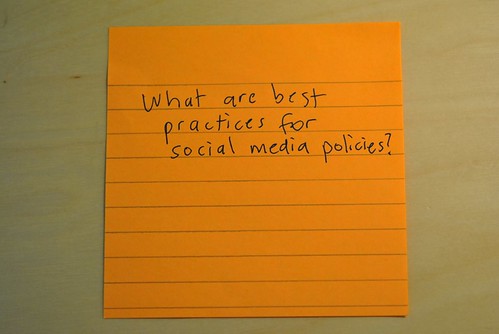
In my book, the Networked Nonprofit, we devoted an entire chapter to creating a social culture, including the development of a social media policy. On my Facebook page, I asked folks what the best practices were for creating a policy. Here’s a summary of the responses and some tips.
What’s In A Social Media Policy?
The tone and philosophy in a social media policy depends on the risk appetite of the organization. As this was explained in the discussion on Facebook, organizations with a stronger risk appetite/tolerance for their activities might have a more “permissive” social media policy. More conservative organizations and fields, might have a more restrictive social media policies. It’s the all about organizational culture as well as the depth of senior leadership’s understanding and knowledge of social media. All these factors come into lay in the writing of policy and how it is enforced.
Structurally, a social media policy has two sections:
(1) Guidelines: This section should be one or pages that summarizes how your organization can be more effective at using social media. It should not be about control, but more on how to use the tools effectively. It should lay out parameters around organizational and personal use. See Ford Social Media Guidelines for an example.
(2) Manual: This section refers to your social media plan, includes best practices on using social media with specific examples. Many organizations use it as part of their training. Take a look at the Red Cross Social Media Policy for a good nonprofit example of the operational side of the policy.
What’s the Process?
Your social media policy should be developed in tandem with your strategy. Discussing the results of the strategy along with the guidelines is valuable. It is also helpful to look at what other organizations are doing and pick out the elements relevant to your org and goals
There are many examples out there, so there is no reason to start from scratch. There is also the Social Media Policy Tool that allows you to answer a couple of questions and it spits out some boiler plate to get you started. But, if you want the policy to truly work, you need a process, especially if your organization is still grappling with fears and concerns. ( Here are some tips for addressing those issues)
If your nonprofit is a large organization with many staff, you’ll want to consult with HR, Legal, IT, and other key departments. You may need a couple of meetings to discuss and review the following:
- Who should be involved writing the policy?
- Who will vet the policy?
See more advice here
One of the best how-to guides I saw recently was when I was in Canada at the My Charity Connects Conference last June and I sat in on this session. There’s lot of good advice and resources to get your started.
What are the best practices for creating a social media policy? How did your organization develop its policy? What training and support did you provide? How do you enforce it?
